Standing among the ruins of Nicopolis in Epirus, I felt like I’d stepped straight into the era of Roman emperors and grand city life. The city’s Odeon, once alive with music, speeches, and debates, sits at the heart of these remains. It’s a beautifully preserved theater that seems to whisper stories of ancient gatherings.
Its stone benches and stage make it easy to imagine the place bustling with Roman citizens.
Not far from the Odeon, I stumbled across dazzling mosaics that once decorated villas and public spaces. Every colorful tile reveals a piece of daily life, art, and luxury from nearly two thousand years ago.
Each mosaic tells its own quiet tale, no words needed.
Even for a casual traveler like me, Nicopolis keeps surprising you. The mix of grand monuments, stunning mosaics, and the peaceful setting near the coast makes it a hidden gem. If you’re curious about ancient Roman culture in Greece, you really shouldn’t skip this place.
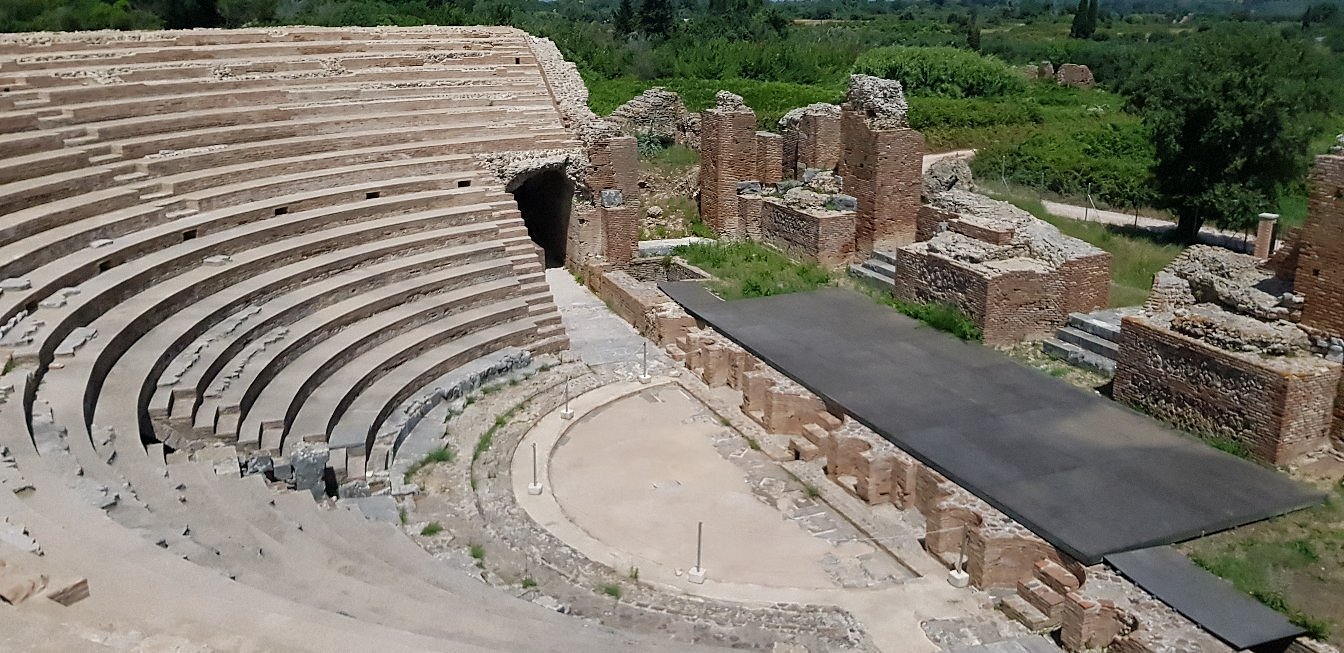
Unveiling Nicopolis: An Imperial Roman Jewel in Epirus
Nicopolis stands as a true testament to Roman power. The city blends Augustus’s ambitions with the local heritage of Epirus.
Walking its ancient paths, I kept feeling the city’s mix of victory, culture, and Mediterranean influence.
Founding by Augustus: The Legacy of Actium
When I first heard about Nicopolis, its origin story caught my attention. Roman Emperor Augustus founded the city in 29 BC, right after his big win over Antony and Cleopatra at the Battle of Actium.
This wasn’t just any city—it was a celebration of Roman success.
Augustus named the city “Nicopolis,” meaning “City of Victory,” and wanted it to stand as a symbol of Roman strength. As I wandered the ruins, I could almost picture the ceremonies he threw to mark the occasion.
The whole foundation of Nicopolis reminded both Greeks and Romans that Augustus now ruled this region.
Augustus encouraged veterans to settle here. He hoped Nicopolis would flourish as a Roman outpost and help connect western Greece with the rest of the empire.
Even now, traces of early Roman planning—broad streets, organized public spaces, and official buildings—dot the archaeological park.

Historical Significance in Romanized Greece
You can see how Nicopolis became a center for Romanization in Greece. The city served as the capital of Epirus Vetus, a Roman province covering parts of today’s northwestern Greece, southern Albania, and nearby regions.
I noticed both Roman and Greek influences blending in its monuments and art.
The city hosted the Actian Games every year. These athletic and artistic competitions drew visitors from across the empire.
Through this festival, Romans reinforced their traditions while respecting local Greek customs.
Nicopolis also had important temples, public baths, and marketplaces. These places brought people together, spreading Roman social values and lifestyle throughout Epirus.
As I wandered the ancient agora, I could picture traders from Macedonia, Albania, and beyond, all mingling and exchanging goods and stories.

Strategic Location and its Mediterranean Connections
I found the setting of Nicopolis both beautiful and practical. The city sits near the coast, just north of modern Preveza in Greece.
Augustus picked this spot for easy access to the Ionian Sea, making it a hub between Italy, Macedonia, and the Mediterranean.
The port connected Nicopolis with Rome and key cities in Albania and Macedonia. Roman engineers built roads that linked the city to important inland routes, making travel and trade simple.
The location also gave Nicopolis military advantages. Controlling this crossroads helped Rome keep an eye on Greece and nearby territories.
Standing near the ancient harbor, I realized how Nicopolis united the empire’s western and eastern worlds—a gateway for both culture and power.

The Odeon of Nicopolis: Center Stage of Roman Elegance
On my walk through ancient Nicopolis, the Odeon stood out. Its blend of function and Roman flair caught my eye.
I could almost hear echoes of music and debate, picturing a city that thrived on creativity and luxury, shaped by imperial power.
Architectural Design and Composition
The Odeon isn’t just a theater—it’s a small masterpiece built for spectacle and comfort. It sits near the city center, with semicircular seating and vaulted corridors that show off Roman skill at merging beauty with function.
Intricate mosaic floors and decorated walls marked the elite areas. I admired how architects placed seats in rising tiers for perfect sightlines, making sure even the wealthiest spectators stayed comfortable.
Columns and arches gave the interior a structured, orderly look, allowing light and sound to move freely.
Nearby villas felt like extensions of this grandeur, showing off wealth and a strong cultural identity. The layout encouraged communication, whether in hushed scholarly talks or lively applause.
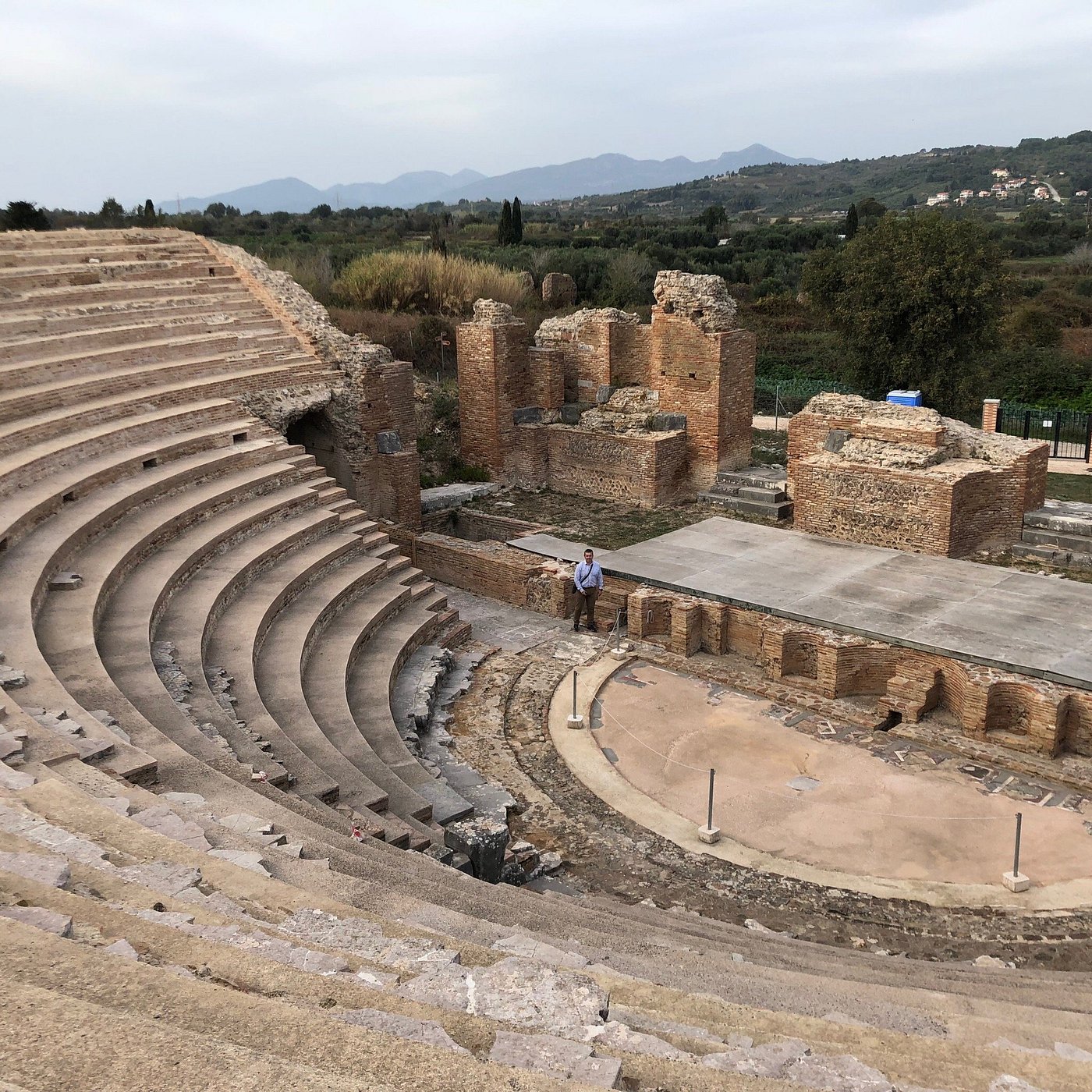
Performances and Cultural Life
Sitting in the Odeon, I tried to imagine the range of shows that once happened here. Unlike the bigger amphitheaters built for wild sports, this place favored a gentler side of Roman life—lectures, poetry readings, and musical contests.
Visiting on a sunny morning, I pictured politicians debating, poets captivating the crowd, and musicians playing for eager listeners. The Odeon became a hub where the body and mind both found delight.
Events here reflected the city’s ties to Roman imperialism, but Greek traditions still lingered.
These performances also reinforced social history. Merchants, scholars, and government officials in the audience helped shape Nicopolis’s reputation as a jewel of Epirus.
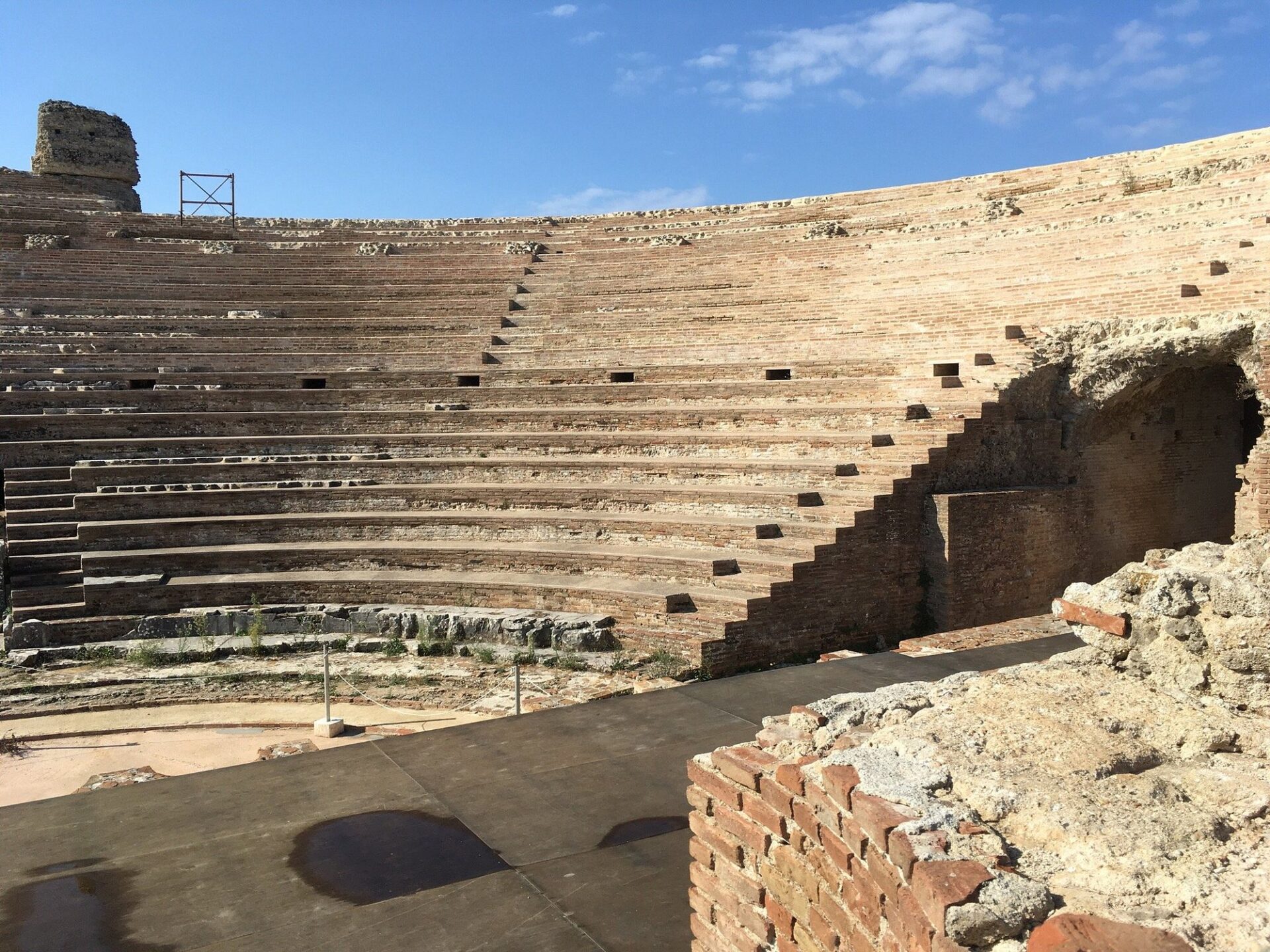
Luxury and Social Hierarchies in the Odeon
You can’t visit the Odeon without noticing its layers of luxury and order. The seating plan showed a strict class divide.
Front rows, closest to the performers, were reserved for the city’s elite—the bourgeoisie and top officials. Their seats came with extra comforts, like cushions and carved designs.
Further back, common citizens took their places on plain stone benches. This separation wasn’t just physical; it reflected the broader social hierarchies and the reach of Roman social systems.
In the evenings, the glow from ornate lamps and the scent of exotic perfumes completed the luxury on display. For travelers like me, seeing how the Odeon blended elegance with control says a lot about Nicopolis’s identity and its legacy in Roman social life.

Marvels in Mosaic: The Artistic Splendor Hidden Beneath
Exploring the Odeon and mosaics of Nicopolis felt like stepping into a time capsule. Patterns, symbols, and styles whispered stories of emperors, faith, and daily bustle.
Everything was crafted under Roman rule but touched by Greece’s rich history and distant eastern cultures.
Mosaic Themes: Symbols, Faith, and Daily Life
As I walked over the ancient floors, I saw how each mosaic told a story with images and symbols. Many showed Greek gods, Roman mythological figures, and even early Christian symbols as faith shifted over time.
Fish, doves, and vines—motifs often linked to Christianity—became more common as the city changed.
Scenes from daily life fascinated me most: banquets, hunts, and markets showed ordinary people, their animals, and even their favorite foods. Inscriptions like “ΤΥΡΦΗ” (meaning comfort and luxury) wove in ideas of wealth and well-being.
These reminders made the mosaics feel alive, showing what the people valued, believed, and hoped for.
Each room seemed to capture a unique piece of Nicopolis’s cultural history, blending Greek heritage, Roman practices, and slowly, Christian beliefs.
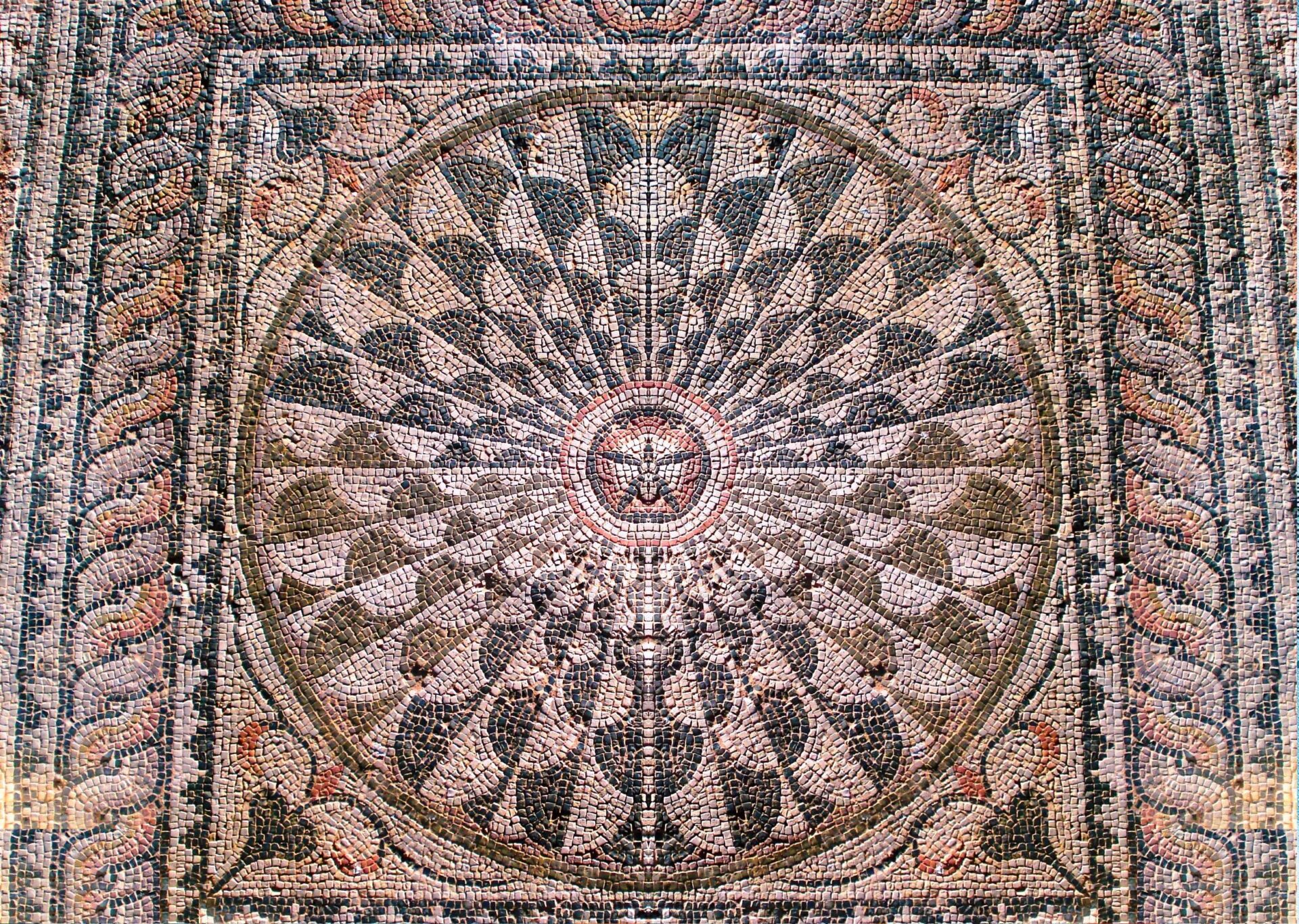
Techniques and Materials Used by Ancient Artisans
Getting up close to the craftsmanship, I noticed tiny colored stones—called tesserae—set into the floors. Artisans picked local marble, limestone, and glass, giving the mosaics a unique shimmer.
Some mosaics used imported stones, adding rare reds and blues—a sign of Nicopolis’s wealth and trade links.
It’s pretty impressive how precisely these tesserae were set, creating detailed faces and flowing robes. Patterns shifted from simple geometric shapes in walkways to rich storytelling scenes in bigger rooms.
The best sections used opus vermiculatum, where tesserae traced the outline of an image like brush strokes in a painting.
A closer look revealed clever details, like grout and layers beneath the mosaics that protected them from moisture—handy for Epirus’s rainy winters.

Influence from the Eastern Provinces
Standing beneath the open sky, I spotted signs of contact with lands far east of Greece. Some patterns and colors echoed styles I’d seen in mosaics from Syria and Egypt, hinting at the multicultural world of Roman Nicopolis.
Lotus flowers, peacocks, and horses appeared—a nod to motifs popular in the eastern provinces. The artists borrowed not just images, but techniques, like shading to show depth, blending eastern finesse with Roman order.
This mix reminded me that Nicopolis wasn’t isolated.
Trade and migration brought in craftspeople who fused local Greek and Roman traditions with eastern designs. They left behind a mosaic record of a city both Roman and boldly global.
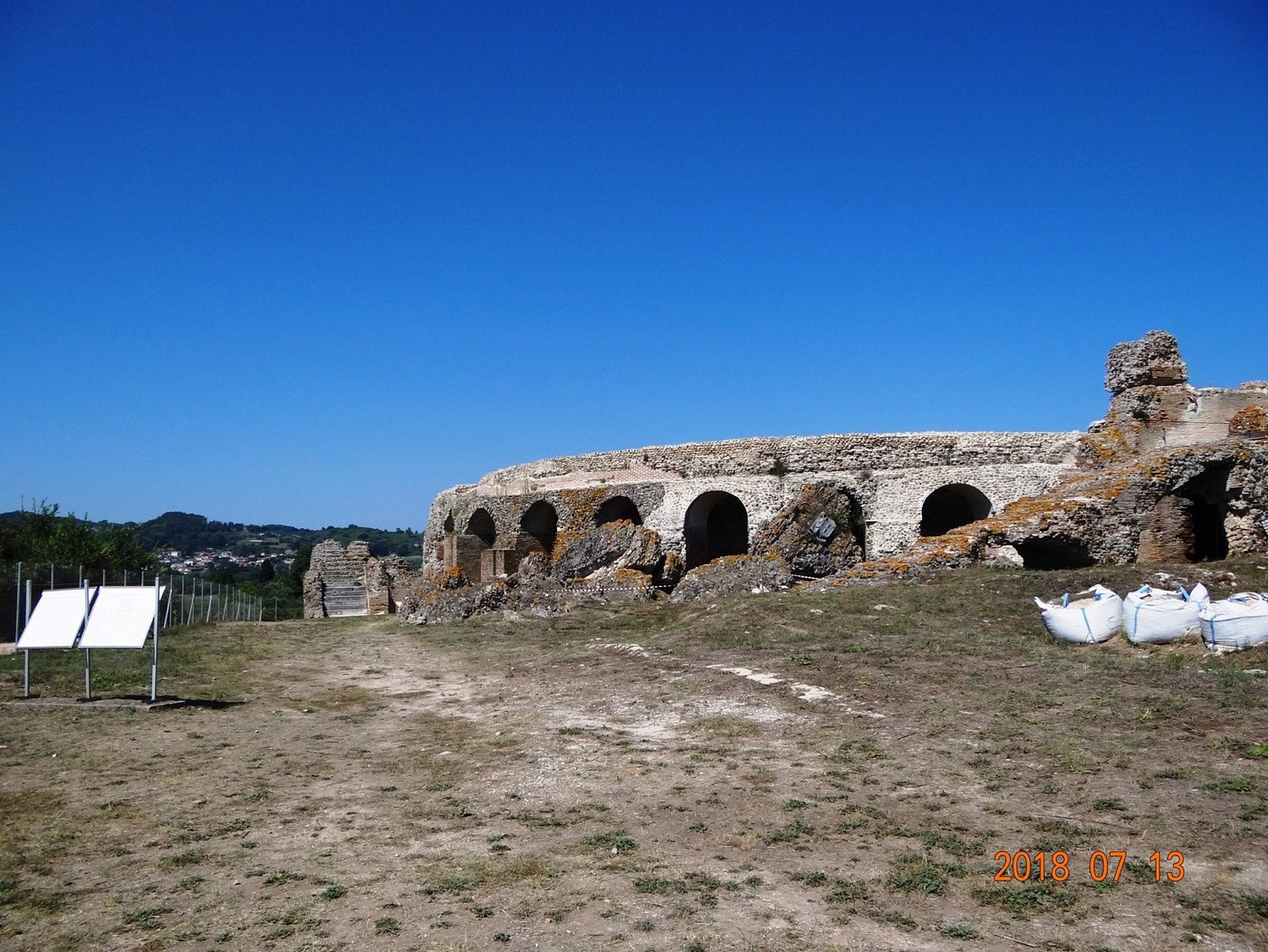
Echoes of Empire: Everyday Life and Imperial Power
Walking through Nicopolis, I feel the weight of its imperial past. Here, the Odeon and mosaics tell stories of emperors, ordinary people, and the dramatic events that shaped their lives.
These ruins reveal layers of hope, defeat, confidence, uncertainty, and the realities of life and death in Roman Epirus.
Emperors, Politics, and Public Spectacle
Augustus founded Nicopolis after his triumph at Actium. In every brick of the Odeon, I sense the ambitions of emperors.
The Julio-Claudians wanted to display their power and bring Roman culture to the provinces.
The Odeon wasn’t just a theater; it served as a stage for politics. Here, local citizens gathered for performances, news from Rome, or imperial decrees.
Public events fused entertainment with displays of authority, making the emperor seem both distant and present.
Spectacles reinforced loyalties and reminded people of Rome’s reach, even in distant Epirus.
Standing on those ancient steps, the connection between the common citizen and the empire feels vivid.

Hope and Defeat: Narratives in the Odeon and Mosaics
Some mosaics in Nicopolis glow with images of gods, victors, and mythic heroes. They speak of hope—dreams of prosperity and the promise of Rome’s golden age.
I paused before scenes showing battles or daily life, reading stories of ambition and confidence.
But mosaic floors sometimes show defeat too. Broken tiles and faded designs hint at changing fortunes.
Civil wars, political uncertainty, or even local disasters left marks the artists couldn’t avoid.
In the Odeon, I picture actors reenacting Rome’s triumphs and tragedies, echoing the highs and lows of real life. Victory and loss lived side by side, just like the citizens.
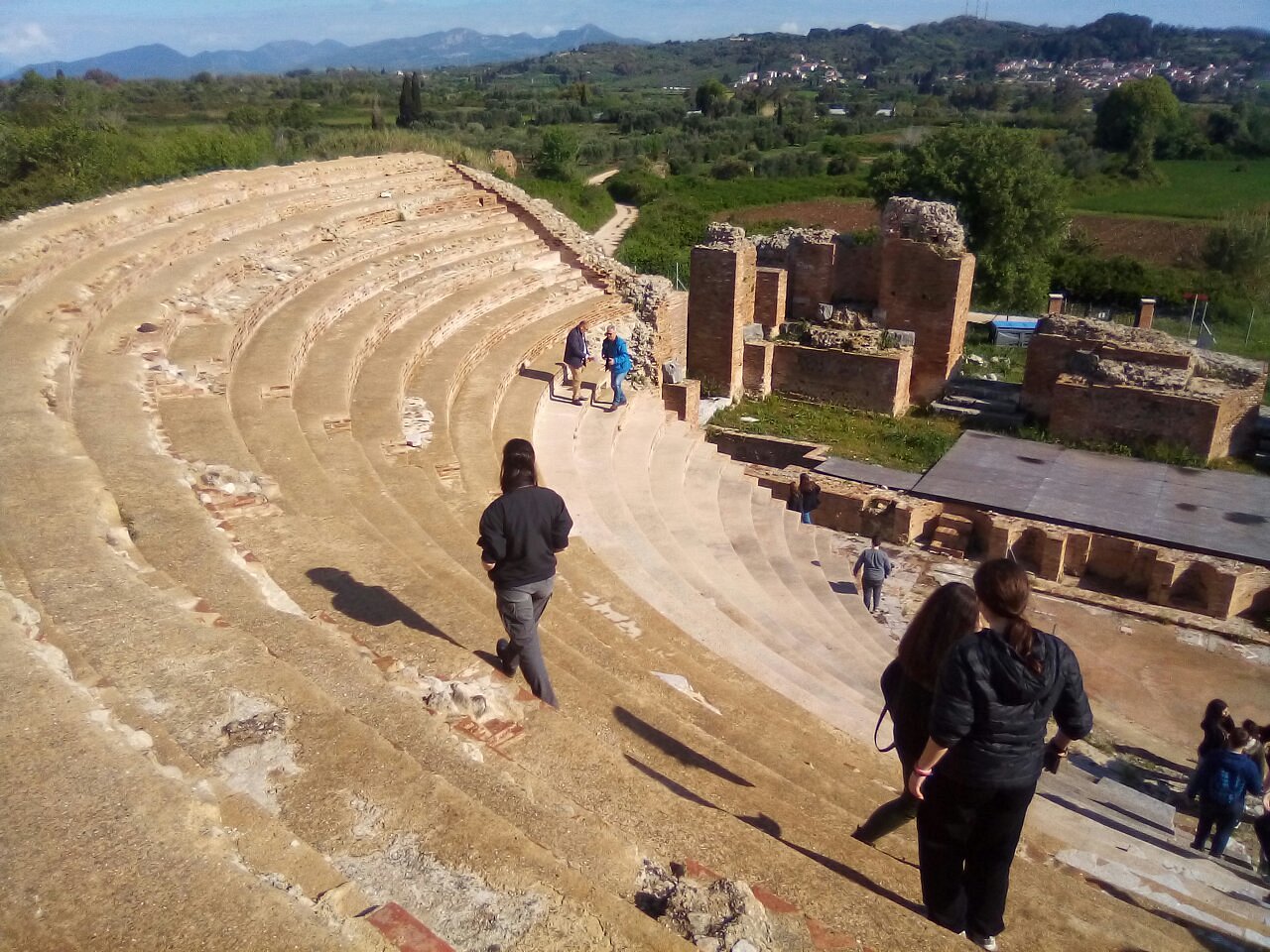
Economic and Social Realities Reflected in Ruins
Beyond the Odeon, I noticed signs of bustling markets and workshops. The economic history of Nicopolis is set in stone: coins, trade goods, and tools left behind.
The city thrived under Roman rule, but fortunes shifted with peace, conflict, and changes in imperial policy.
Key markers of daily life:
- Potter’s fragments, showing what people ate and drank
- Inscriptions tracking tax payments and trade
- Residential mosaics that hint at family life, priorities, and social class
Underneath the splendor, uncertainty still shows through. Changes in leadership, wars, and shifts in imperial focus brought both good times and bad.
Every structure, from grand halls to simple homes, tells a piece of the city’s social story. I find myself imagining the confidence of merchants, the hope of workers, and the reality of facing defeat when times grew tough.
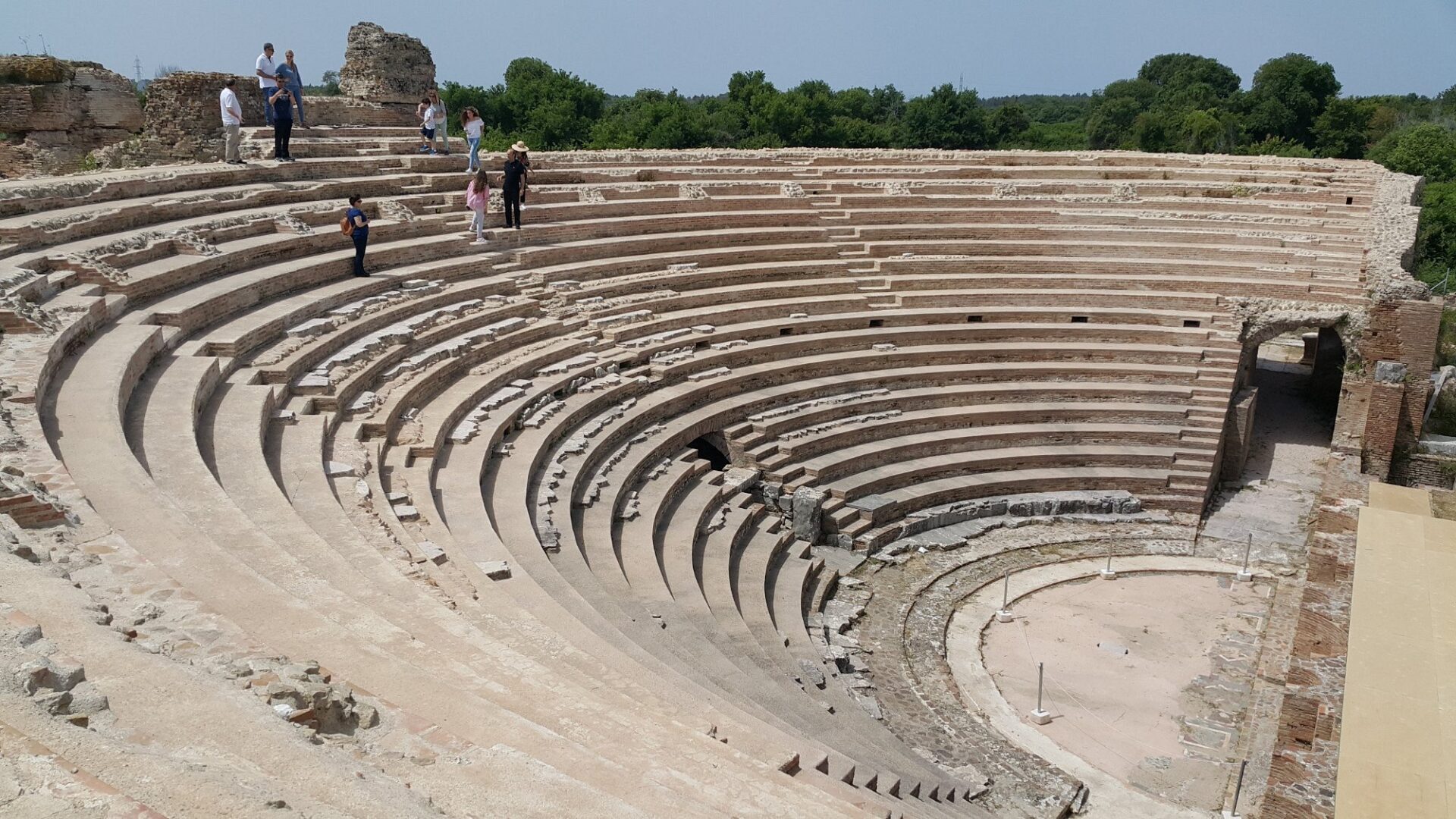
Nicopolis and Its Mediterranean Connections
As I wandered through Nicopolis, I felt the pull of distant lands woven into its stones and artwork. These ruins aren’t just reminders of Roman rule—they reveal stories of travel, trade, and tradition that connected Epirus with cultures reaching from Rome to the far edges of the Mediterranean.
Epirus as a Crossroads: From Rome to Byzantium
If you stand in Nicopolis, you can’t help but notice how perfectly it sits for travel and exchange. Augustus founded the city in 29 BC, right after the Battle of Actium, as a tribute to Roman power—and maybe to impress the neighbors.
Epirus linked Italy with mainland Greece and the eastern provinces. Ships sailed in from Naples or even Tibur, bringing goods and visitors, and turning it into a busy port.
Roman legions and travelers crossed through here on their way to Byzantium or further into places like Bulgaria or Romania. I can picture merchants arriving from France or Spain, unloading glassware and textiles.
Paths from the north ran through Macedonia. Nearby islands like Cyprus sent olive oil and pottery.
Over the centuries, the city became a meeting point, blending ideas and styles from the Roman world with local Greek customs. Even as empires shifted—from Roman to Byzantine to Ottoman—Nicopolis kept its strategic importance.
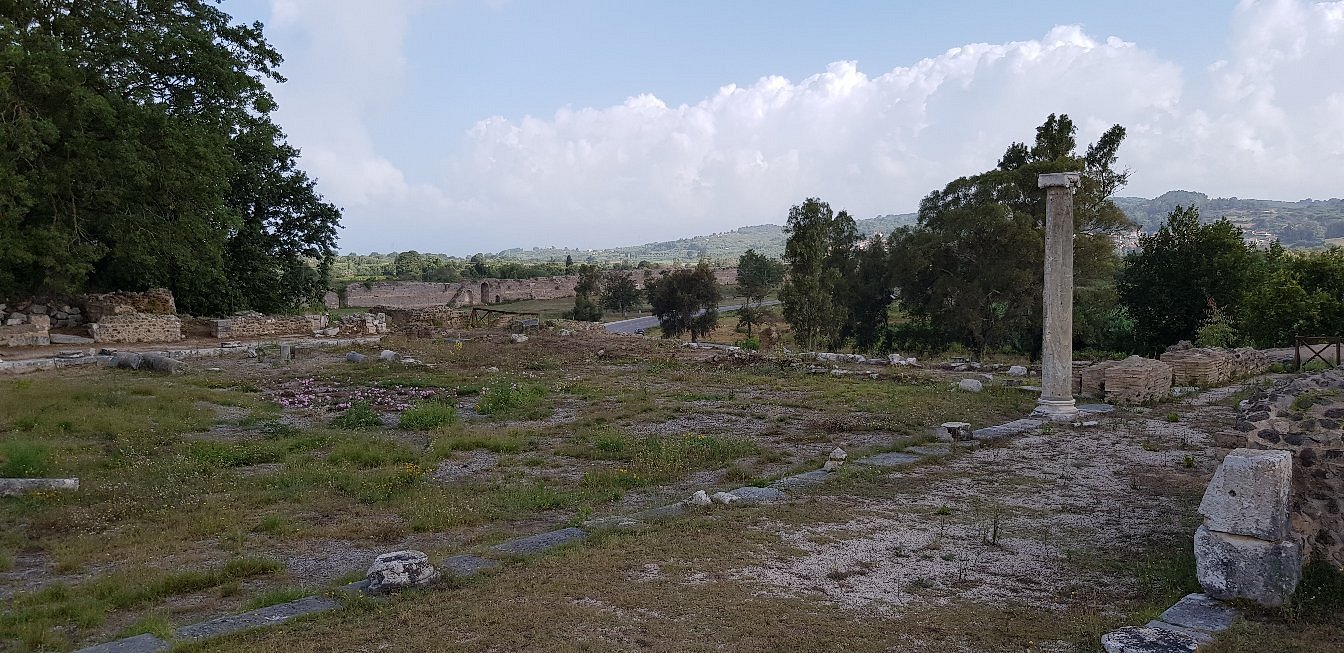
Cultural Exchanges Across Regions
The art and buildings in Nicopolis really do tell stories of cultural mixing. I notice this especially in the mosaics and architecture.
Many floors show motifs and symbols from ancient Greece, but Roman craftsmen—who traveled from all over—borrowed and adapted them. For example, you’ll spot geometric borders like the ones in Roman Spain, or rich colors that remind me of mosaics from Turkey.
Some designs even echo Tunisian North Africa or distant islands like Malta. Carvings show the hands of artisans trained in both Greek and Roman styles.
Lists of imported materials mention marble from Croatia, paints from Italy, and glasswork from the eastern Mediterranean—maybe Cyprus or Egypt. Even after Rome fell, the site stayed connected.
Later Byzantine mosaics picked up styles popular in Bulgaria and Turkey. New influences arrived during Venetian, Ottoman, and Renaissance times, when trade routes stretched as far as the Netherlands and France.
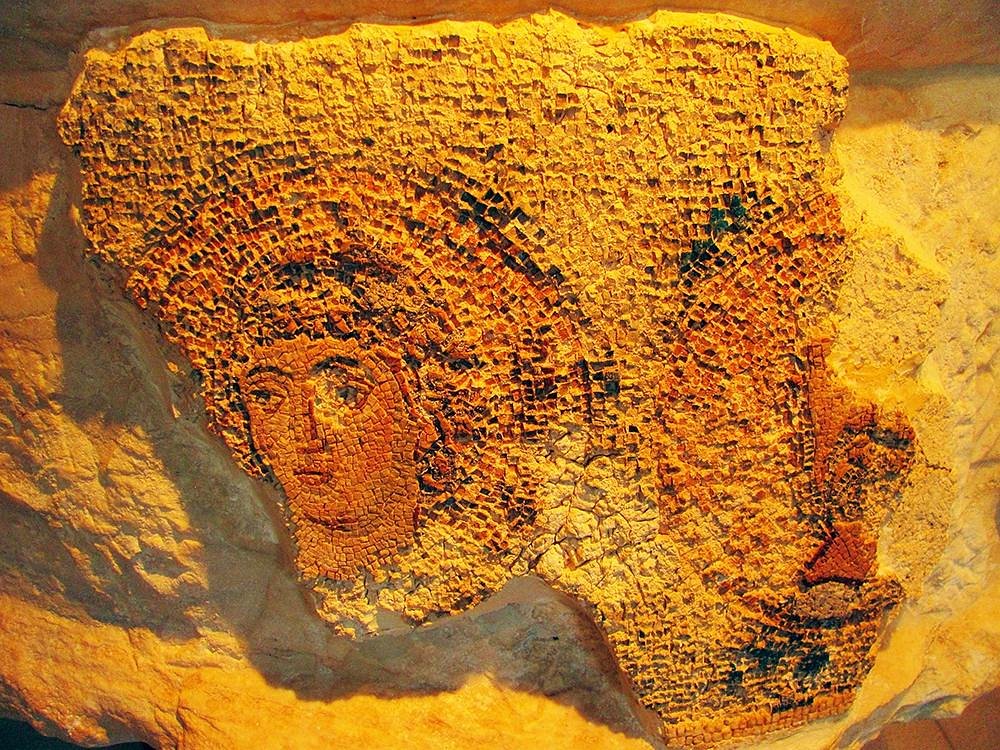
Preserved Heritage: Influences from Ancient to Modern Times
When I wander through the ruins today, I can’t help but notice the layers of history everywhere. Roman and Byzantine builders changed older Greek temples, and they even turned some spaces into places for Christian worship.
Each era really left its own mark on the city’s layout. You can almost hear the voices of the past echoing through the stones.
Later, the Ottomans arrived and brought fresh influences from the Islamic world. I see nearby mosques and newer roads that hint at how Europe kept shifting.
Venetian, Albanian, and even Slavic travelers—think folks from what’s now Hungary, Slovakia, or Poland—added their own stories to daily life here.
Today, the legacy still shapes modern Greece. Conservation teams pull in techniques from all over Europe: Italy, Austria, Sweden, the UK—you name it.
I often run into visitors from Denmark, Norway, France, and plenty of other places. For me, Nicopolis feels like a living bridge, connecting people and stories from every corner of the Mediterranean and beyond.

